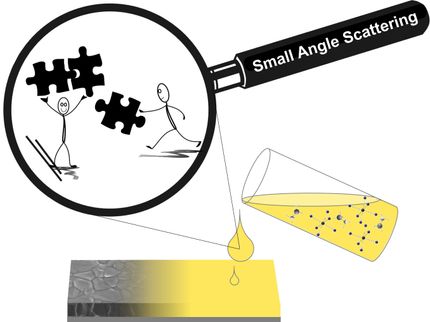On the road to non-toxic and stable perovskite solar cells
Tin instead of lead
The promising halide perovskite materials for solar energy conversion show high efficiencies, but this comes at a cost: The best perovskite materials incorporate toxic lead which poses a hazard to the environment. To replace lead by less toxic elements is not easy since lead-free perovskites show lower stability and poor efficiencies. Now, an international collaboration has engineered a new hybrid perovskite material with promising efficiency and stability.

© Meng Li/HZB
Among the new materials for solar cells, the halide perovskites are considered particularly promising. Within a few years, the efficiency of such perovskite solar cells raised from a few percents to over 25 %. Unfortunately, the best perovskite solar cells contain toxic lead, which poses a hazard to the environment. However, it is surprisingly challenging to replace the lead with less toxic elements. One of the best alternatives is tin. Halogenide perovskites with tin instead of lead should show excellent optical properties, but in practice, their efficiencies are mediocre and decrease rapidly. And this rapid "aging" is their main disadvantage: the tin cations in the perovskite structure react very quickly with oxygen from the environment so that their efficiency drops.
Now, an international cooperation led by Antonio Abate, HZB, and Zhao-Kui Wang, Institute of Functional Nano & Soft Materials (FUNSOM), Soochow University, China, has achieved a breakthrough that opens up a path to non-toxic perovskite-based solar cells that provides stable performance over a long period. They also use tin instead of lead but have created a two-dimensional structure by inserting organic groups within the material, which leads to so-called 2D Ruddlesden-Popper phases. "We use phenylethylammonium chloride (PEACl) as an additive to the perovskite layers. Then we carry out a heat treatment while the PEACl molecules migrate into the perovskite layer. This results in vertically ordered stacks of two-dimensional perovskite crystals" explains first author Dr Meng Li. Li is a postdoc in Abate’s group and has organised the close cooperation with the Chinese partners. At the Shanghai Synchrotron Radiation Facility (SSRF), they were able to precisely analyse the morphology and crystal characteristics of the perovskite films after different annealing treatments.
The best of these lead-free perovskite solar cells achieved an efficiency of 9.1 % and high stability values, both under daytime conditions and in the dark. The PEACl molecules accumulate between the crystalline perovskite layers as a result of the heat treatment and form a barrier that prevents the tin cations from oxidising. "This work paves the way for more efficient and stable lead-free perovskite solar cells," Abate is convinced.
Original publication
Meng Li, Wei-Wei Zuo, Ying-Guo Yang, M. H. Aldamasy, Qiong Wang, Silver Hamill Turren Cruz, Shang-Lei Feng, Michael Saliba, Zhao-Kui Wang, and Antonio Abate; Tin halide perovskite films made of highly oriented 2D crystals enable more efficient and stable lead-free perovskite solar cells"; ACS Energy Letters; 2020
Original publication
Meng Li, Wei-Wei Zuo, Ying-Guo Yang, M. H. Aldamasy, Qiong Wang, Silver Hamill Turren Cruz, Shang-Lei Feng, Michael Saliba, Zhao-Kui Wang, and Antonio Abate; Tin halide perovskite films made of highly oriented 2D crystals enable more efficient and stable lead-free perovskite solar cells"; ACS Energy Letters; 2020
Organizations
Other news from the department science

Get the chemical industry in your inbox
By submitting this form you agree that LUMITOS AG will send you the newsletter(s) selected above by email. Your data will not be passed on to third parties. Your data will be stored and processed in accordance with our data protection regulations. LUMITOS may contact you by email for the purpose of advertising or market and opinion surveys. You can revoke your consent at any time without giving reasons to LUMITOS AG, Ernst-Augustin-Str. 2, 12489 Berlin, Germany or by e-mail at revoke@lumitos.com with effect for the future. In addition, each email contains a link to unsubscribe from the corresponding newsletter.




























































